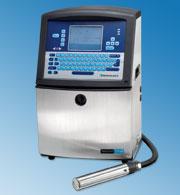
Codes that are faded, smudged, or visually incomplete can cause considerable downtime, excessive waste, and a degraded view of a product’s quality. Cable and tubing manufacturers know this all too well. Directly printed on the surface of wire insulation, cable jacketing, and plastic tubing, legible codes provide reliable product identification and traceability of products, batches, and lots.
Fortunately, ink transfer is completely preventable with the right application-specific solutions. Videojet Technologies Inc., manufacturer of coding, printing, and laser marking products, fluids, and accessories for the product identification industry, suggests three key ways to influence the coding process to promote optimum ink adhesion and eliminate transfer from one surface to another on spooled wire or cable.
1. Select the right ink. With so many inks available to choose from, it is imperative to select inks that are designed and formulated to complement the application and operating conditions.
2. Evaluate your materials. Materials containing high amounts of volatile plasticizers (chemical additives) tend to resist good ink adhesion for long periods of time. When coding on these materials, performance must be checked and suitable precautions made. It is essential to select an ink with the appropriate chemistry to obtain good adhesion on the substrate.
3. Survey your processes. Sometimes changing up processes can improve ink adhesion on products. For example, coding immediately after the wire or cable has exited the extruder, instead of waiting until it exits the cooling bath, can promote rigorous initial adhesion.
“Companies should look for installation expertise, a wide selection of well-tested inks, and significant experience and knowledge about extruded product applications. The best coding equipment/ink vendors run tests with actual samples and replicate the production environment as closely as possible,” said Drew Weightman, vertical marketing manager for Videojet. “The good news is that there are solutions available to solve almost any transfer problem; it’s just a matter of finding the right one that will adhere, and stay put.”





